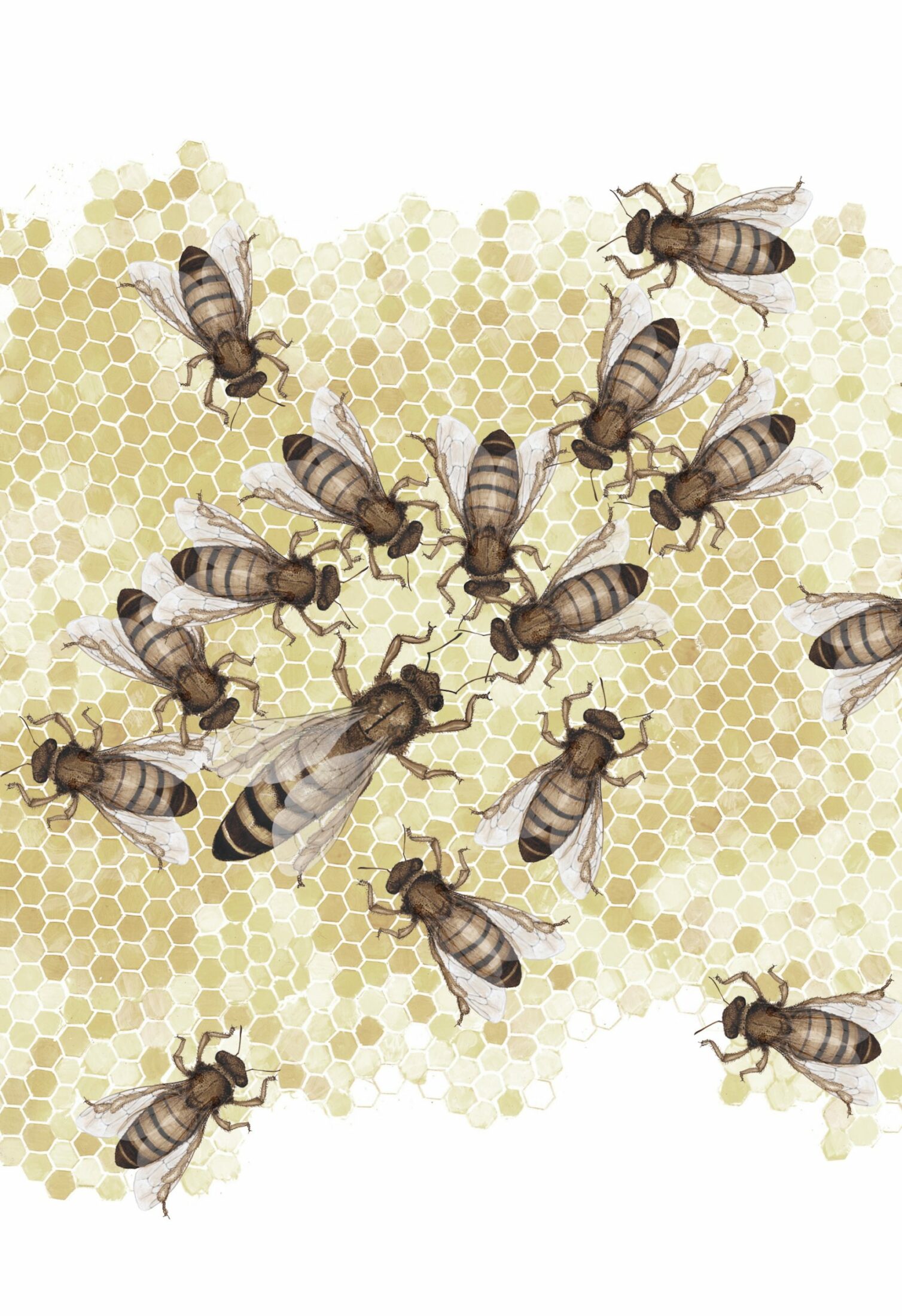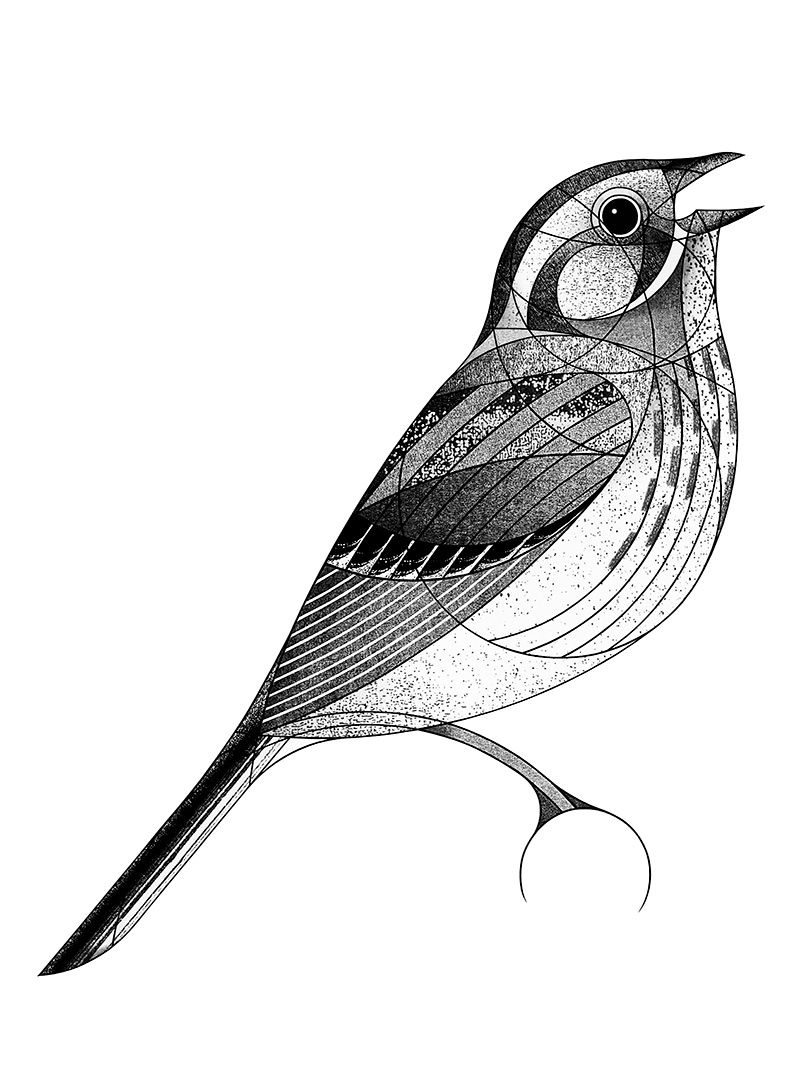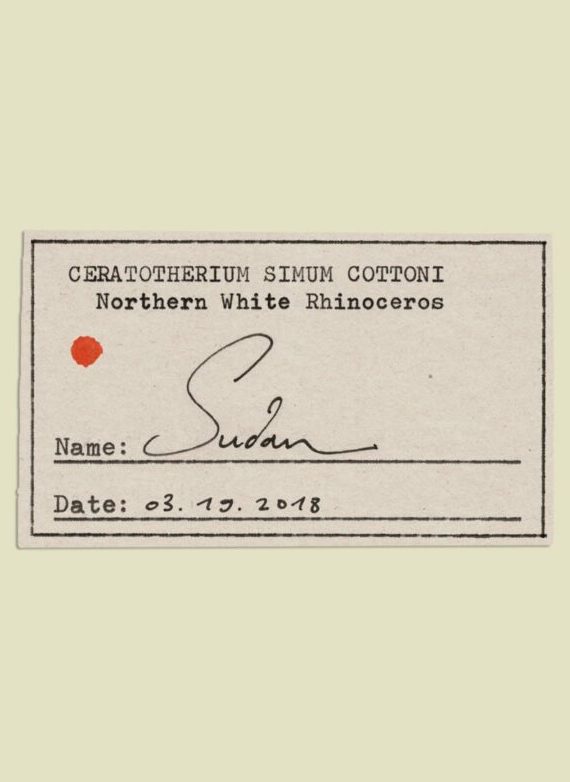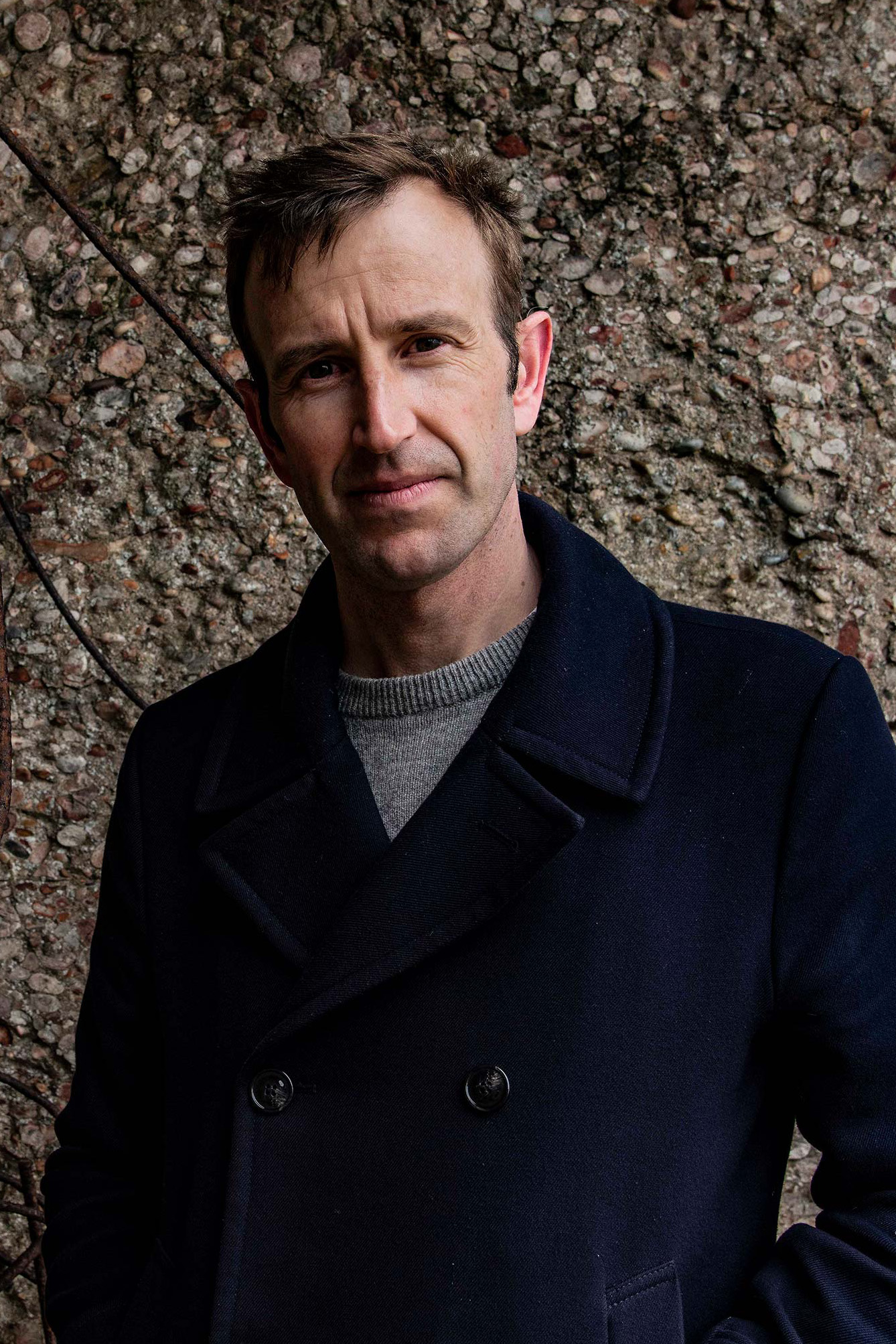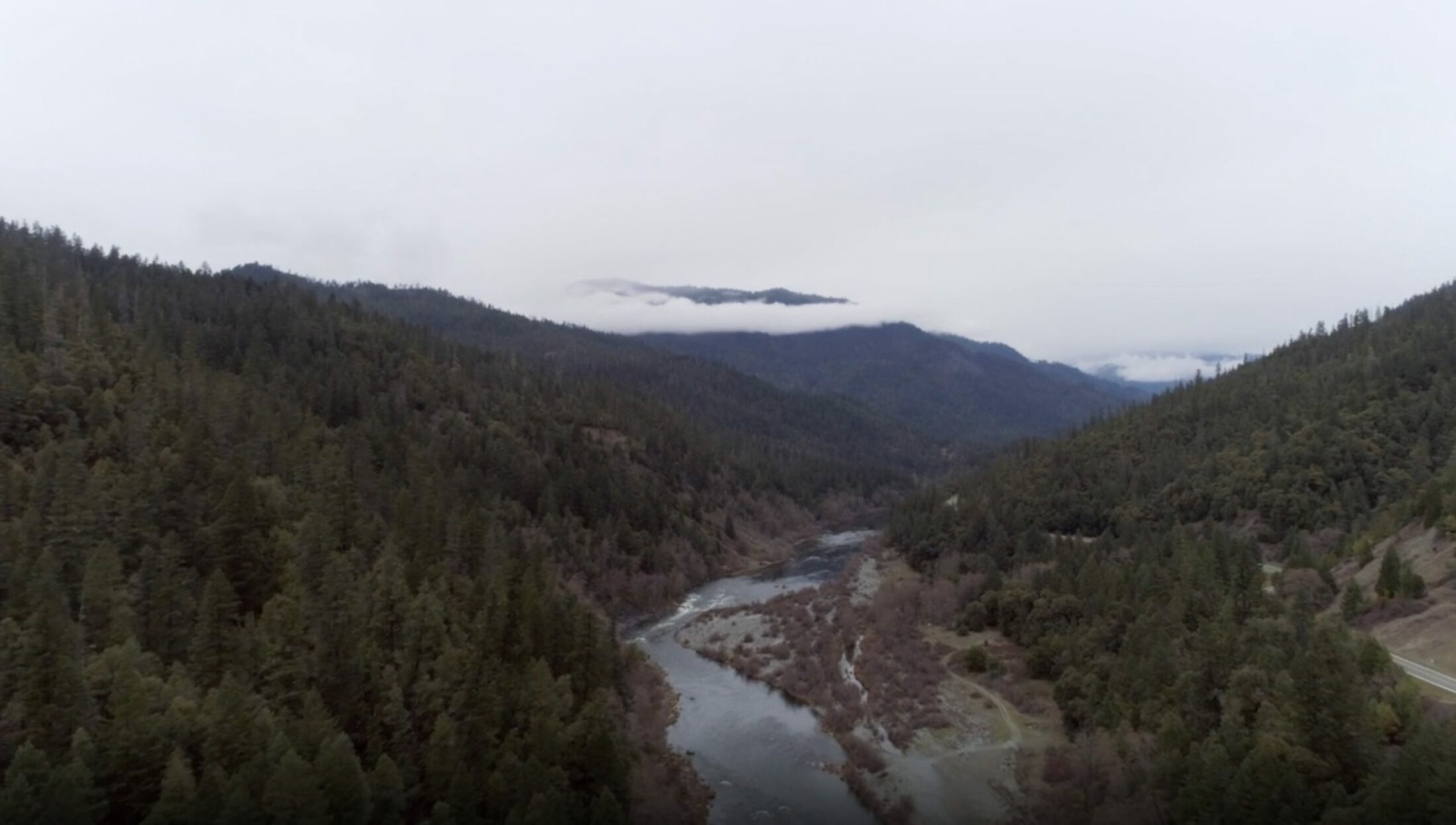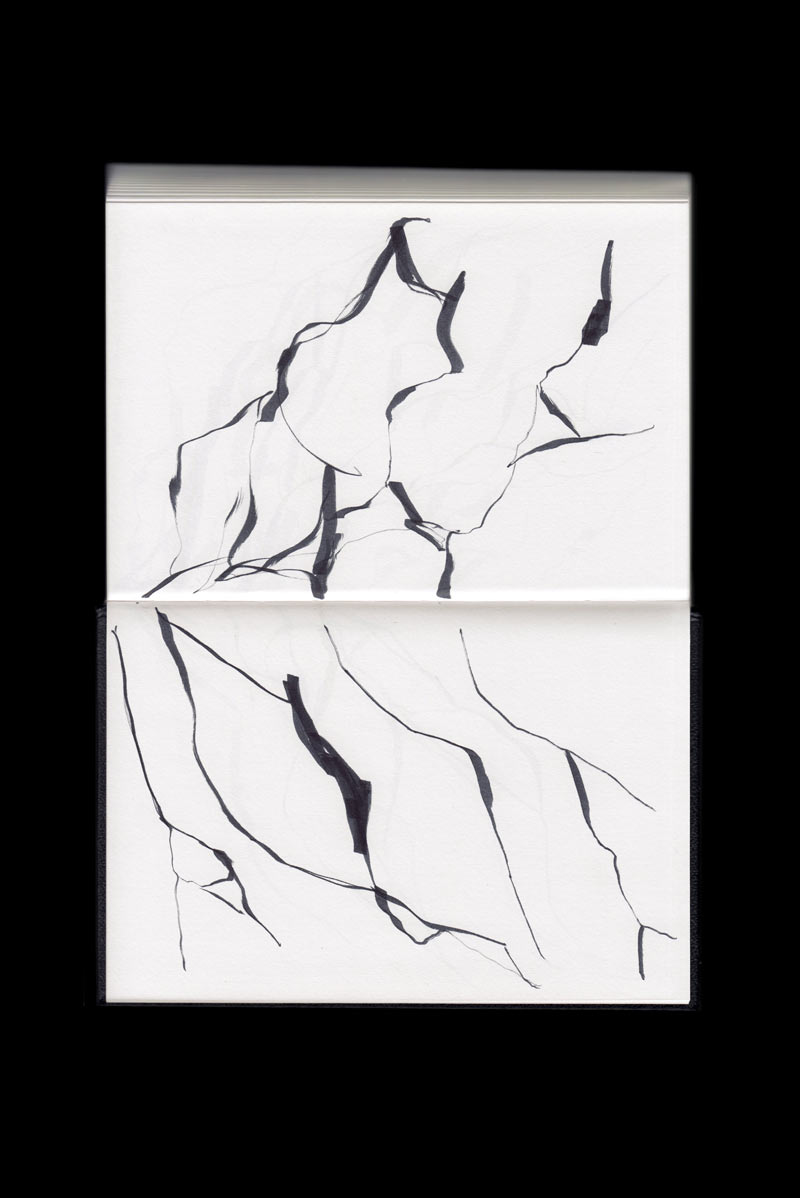
Ellen Litwiller is a muralist and illustrator based in San Rafael, California. After graduating from the School of the Art Institute of Chicago, she returned to the Bay Area where she is an independent contractor for murals, illustration, models, and exhibit installation for the Natural History Museum. Her work focuses on combining art with scientific narratives.
Chelsea Steinauer-Scudder is a writer based in northern New England whose work explores the human relationship to place. Her essays have been featured in Crannóg Magazine, Inhabiting the Anthropocene, and EcoTheo Review. Her forthcoming book is Rebirth: Mothering Through Ecological Collapse.
Adam Loften is an Emmy- and Peabody Award–nominated filmmaker and producer of virtual reality experiences and podcasts. His films include: Sanctuaries of Silence, The Atomic Tree, Counter Mapping, and Welcome to Canada. His work has been featured on PBS, National Geographic, The Atlantic, and The New York Times.
This multimedia piece illustrates the elaborate dances of the honey bee, used to communicate intricate details about food, the hive, and the well-being of the queen.
The western honey bee, Apis mellifera, has been a companion to human beings for thousands of years. As we’ve long welcomed the nourishment of honey and have come to rely on this insect for pollination, we’ve learned ways that we might nourish the honey bee in return—by providing abundant habitat and tending to hives.
Over the course of this relationship, Homo sapiens societies have grown ever more complex, experimenting with various forms of government and social organization that seek to reconcile the needs of the individual with the needs of the collective. Apis mellifera, meanwhile, has sustained a thriving cooperative society for at least twenty-seven million years, with each individual member of the colony in service to, and inseparable from, an integrated whole.
The honey bee colony operates as a female-run society, descended from one fertile queen and sustained and managed by her thousands of daughters, the workers—all oriented to the well-being of the nest. With the characteristics of a superorganism, this multi-generational family is engaged in a complex, ongoing conversation, comprised of movements, chemical signals, and scents through which each daughter adjusts and coordinates her actions according to the well-being of the queen and the changing needs of the colony.
While much of this communication is received and relayed within the hive, the honey bee also engages in conversation with the living world. A foraging bee is attuned to Earth’s magnetic field, to the position of the sun, landmarks, and the direction and speed of the wind.
When she returns to the nest to tell her sisters about a source of food or a potential site for a new colony, she steps onto the vertical wax comb inside the hive …
And then she begins to dance.
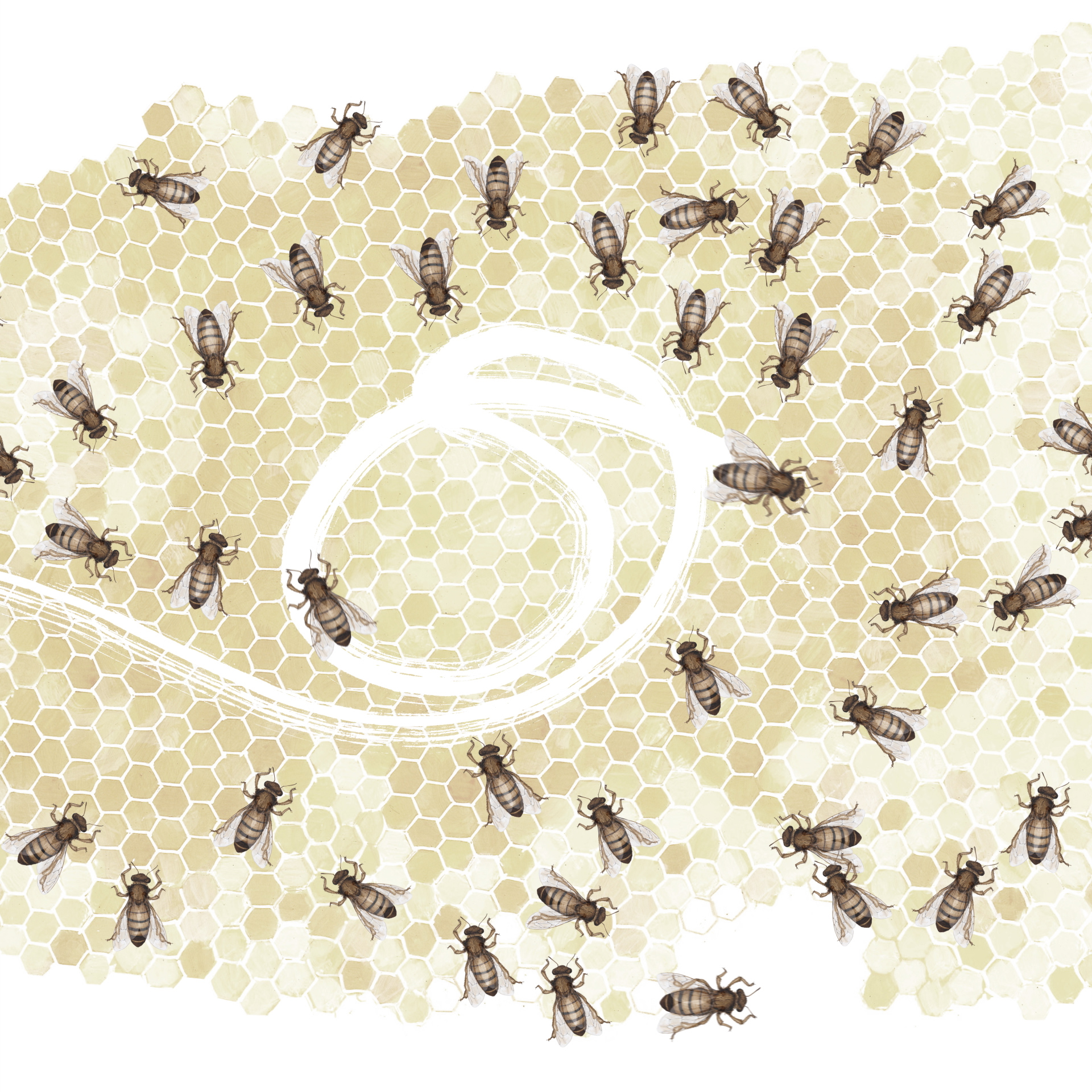
The worker bees of a honey bee colony spend the majority of their energy foraging for nectar and pollen from flowers.
Foraging bees head out in the early hours of morning in spring. When a bee finds a source of food—one that is between twenty-five and one hundred meters from the hive—she leaves her odor on a flower, collects a bit of nectar, and returns to the colony.
Once home, she distributes some of the nectar to a gathering audience and begins the round dance.
She moves in narrow circles, at times reversing course, as more of her sisters gather. She may pause to distribute more nectar and may repeat the dance several times in different locations within the hive.
Her audience, now informed of the nearby sustenance, will fly out of the hive in all directions to search for the source, aided by the scent of the nectar given to them by the dancer and then by the scent that she left on the flower.
Should a worker bee find an especially abundant food source that is far from the hive, she returns to the colony and, in a series of elaborate steps on the vertical dance floor near the entrance of the hive, performs the waggle dance—a figure-eight movement that alternates with a vibrating “waggle run.”
It is the waggle run that relays critical information. For this, she runs in a straight line, vibrating her body vigorously, then turns and circles back to run the same vibrating line again and again. The direction in which she runs communicates to her sisters the angle they must fly to the food source, in relation to the position of the sun. If she dances straight upwards, for instance, the food source is located in the exact direction of the sun. If she dances forty-five degrees to the left of that, the direction of the source is forty-five degrees left of the position of the sun.
Every seventy-five milliseconds that she adds to her run corresponds to another 330 feet, approximately, from the hive to the food source. The more vigorous her dance, the more abundant the food. With their antennae, her sisters sample the odor of the flowers coming from the dancer’s body.
Having witnessed her dance, her sisters depart, heading straight to abundance.
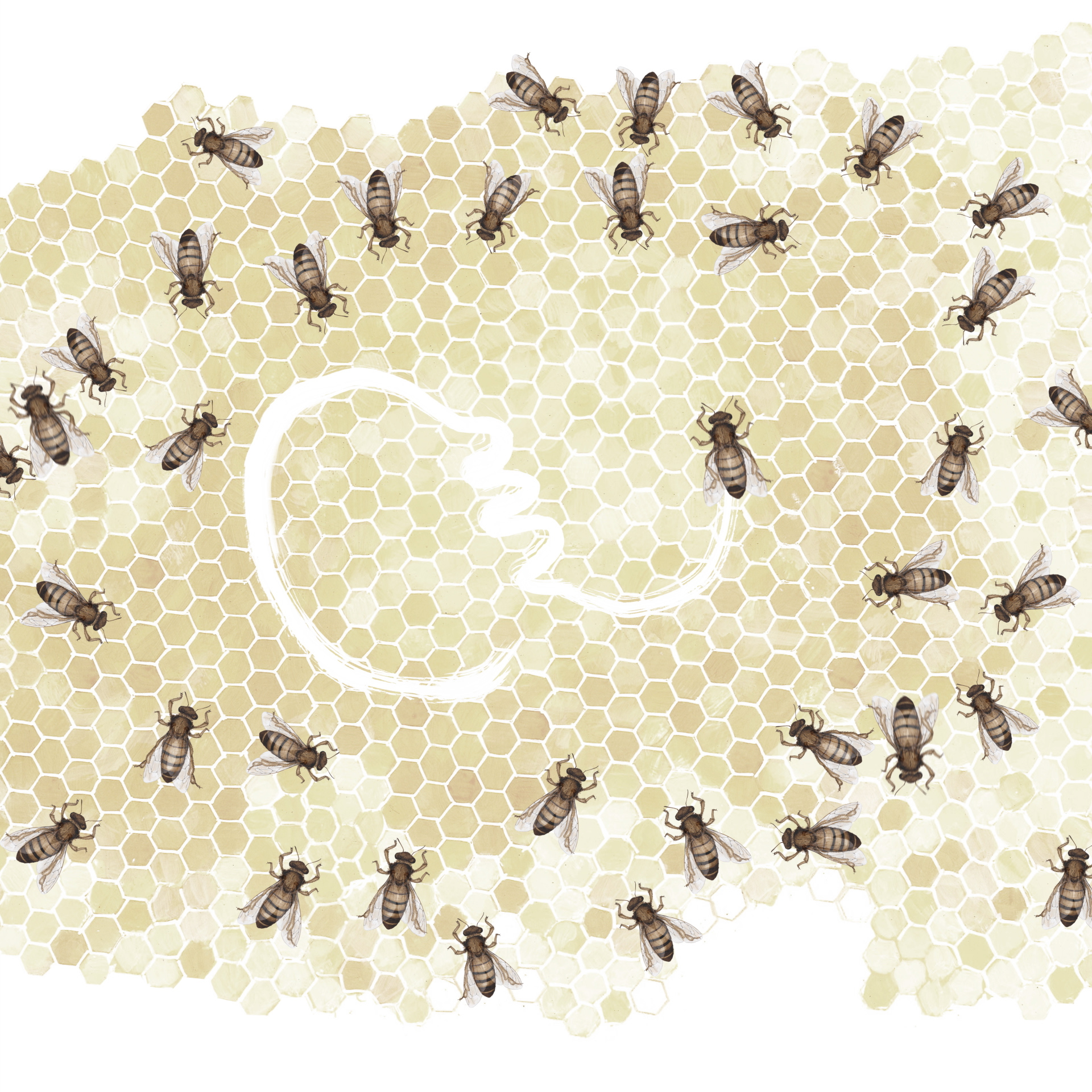
Bees carry a positive electrical charge, while flowers carry a negative one. When a bee visits a flower for pollen or nectar, the flower’s charge changes from negative to positive.
Other bees sense this subtle change and will avoid an already-visited flower. Thus, the flower and the bee benefit: the flower distributes its pollen, increasing its chances for reproduction; the bee receives nectar and also guarantees her sisters will not waste energy visiting the same site.
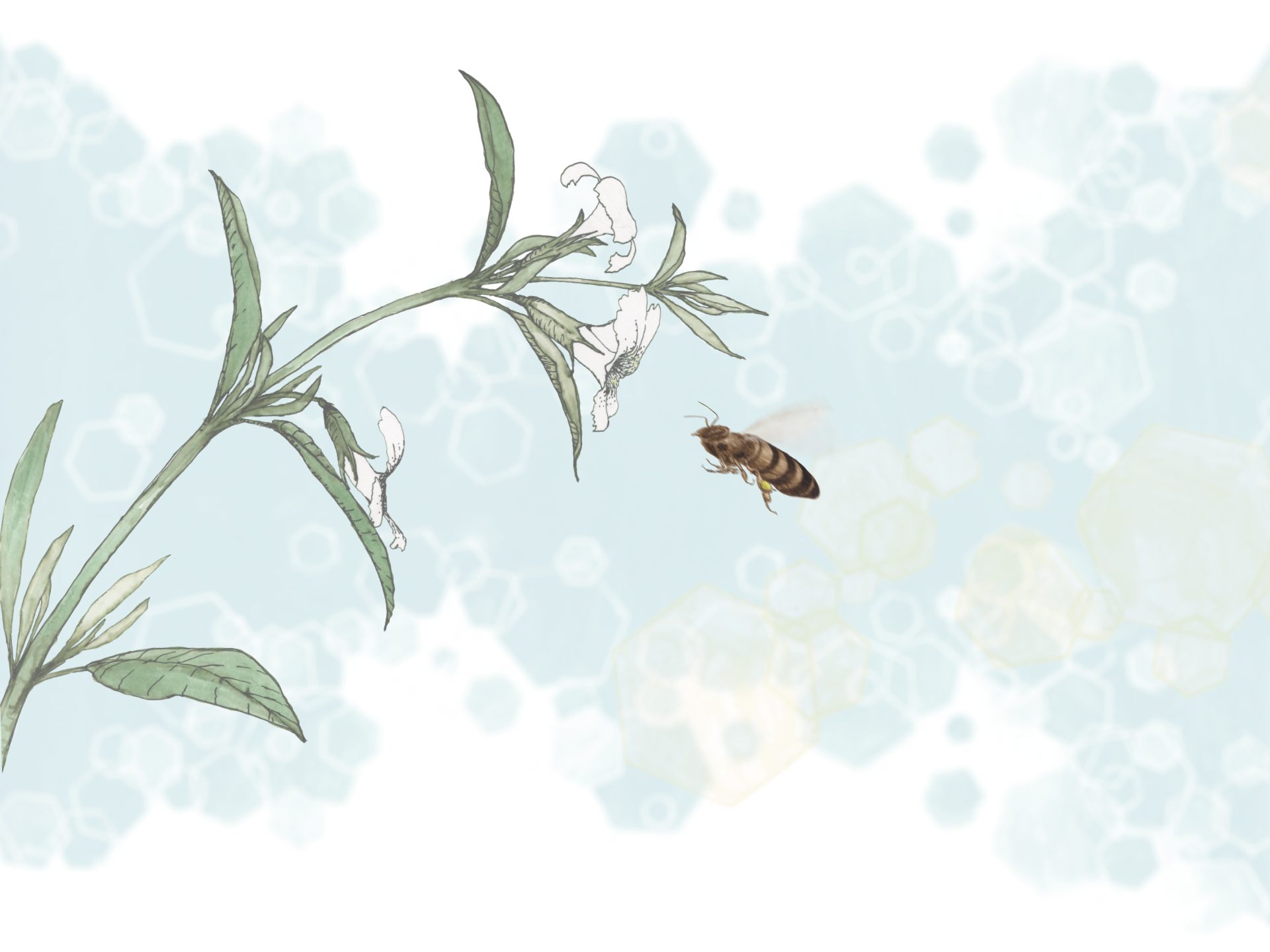
Often, when it has outgrown the original hive, a honey bee colony “reproduces” by swarming. A new queen is left to continue the parent colony as the old queen and a majority of the workers set out in a swarm, clustering on a nearby tree branch or other overhang.
This dripping, hanging colony-in-transit stays put while several hundred scouts are dispatched to identify potential hive sites. A scout will inspect a site, map its internal dimensions, and, if the site is promising, will return to the swarm and perform the waggle dance on the face of the cluster, communicating the distance and direction to the site. Other scouts will learn the dance and then fly off to inspect the site themselves. If they, too, find it promising, they return and repeat the dance. The more promising the site, the more vigorous the dance, as more scouts join to dance the same pattern.
In this way, a swarm might debate up to twenty-five potential nesting sites. When they agree on one—often when around a hundred scouts begin to emit a certain piping sound—the entire swarm flies together to establish the site as their new home.
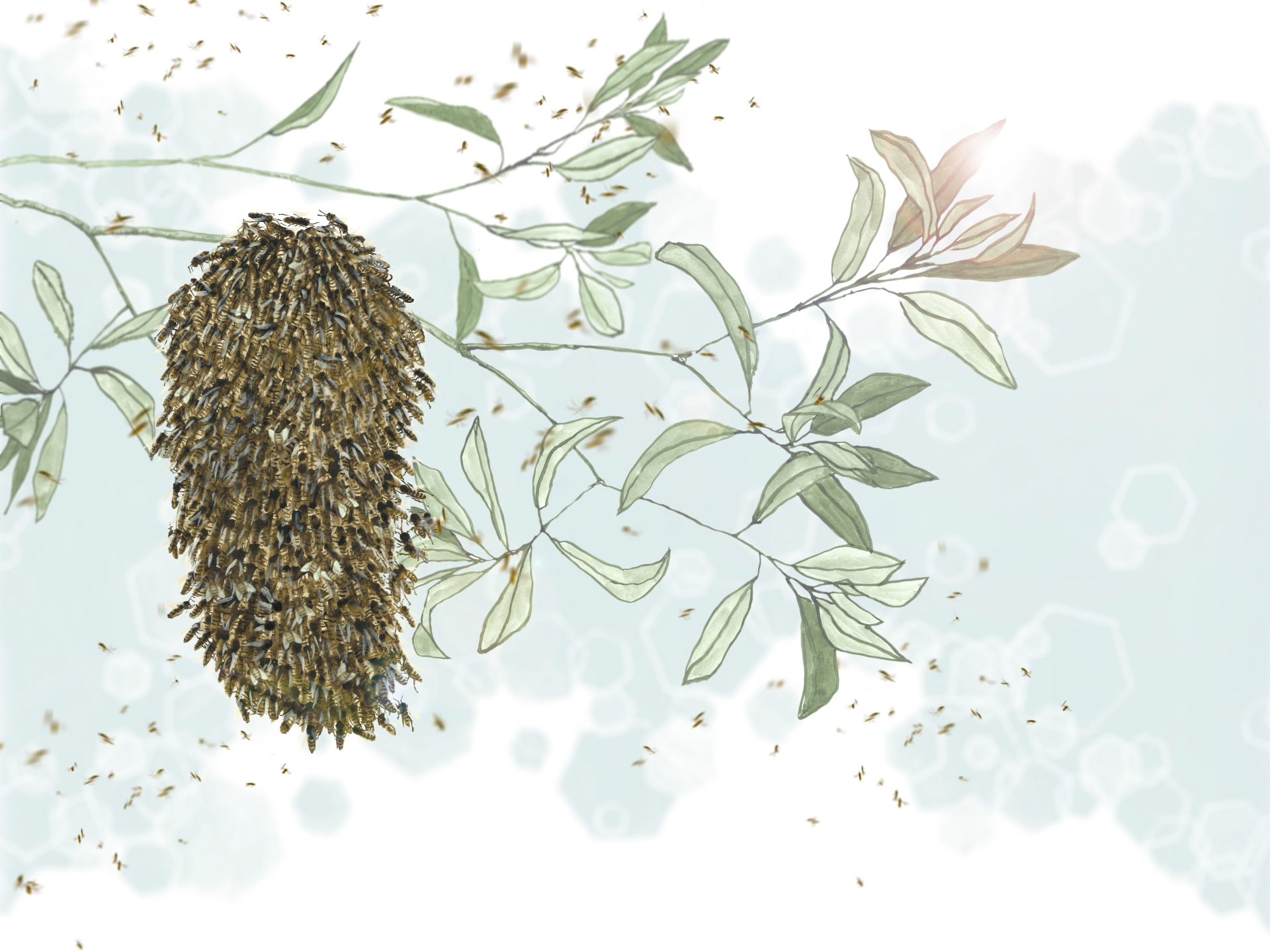
Each bee in a honey bee colony has a specific role within the collective. The queen’s primary role is to produce offspring. Worker bees constantly monitor the well-being of the queen through her pheromones, which consist of nine compounds that create specific chemical signatures. She is always surrounded by ten to twelve worker bees who touch their antennae to her, collect her pheromones, and move through the colony to relay the corresponding information.
Although she does not exist to control the colony, she is crucial to the survival of the hive. Depending on the chemical blend that she produces, the queen can send signals throughout the colony to stimulate comb construction, maintain social hierarchy, delay the maturation of worker bees, and regulate foraging.
The ongoing transmission of the queen’s pheromones serves as proof to the colony of the queen’s well-being. If she dies, the transmission is interrupted and the workers know to rear a new queen.
